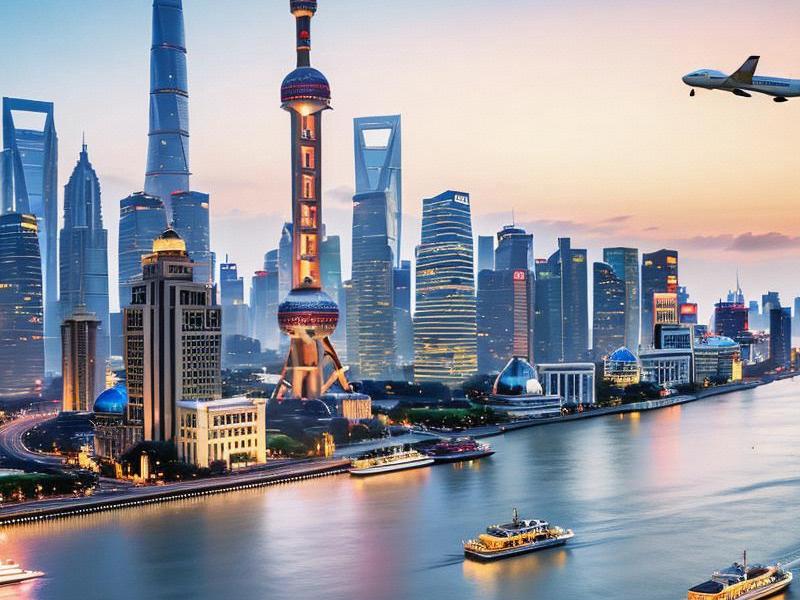An In-depth Look at the Dynamic City of Shanghai
⏱ 2025-04-24 08:48 🔖 上海龙凤419
📢0℃

Shanghai, a name that resonates with the rhythm of modernity and the echoes of history, stands today as a beacon of China's economic prowess and cultural vibrancy. This city, nestled along the banks of the mighty Yangtze River and cradled by the East China Sea, is not just a geographical entity but a living, breathing testament to the nation's relentless pursuit of progress and its ability to embrace and integrate diverse cultures.
The story of Shanghai is one of transformation, a narrative that has been unfolding for over a century. Once a modest fishing village, it has risen meteorically to become the economic engine of China, a global financial center, and a cultural melting pot. This metamorphosis is not merely a tale of economic growth but also a chronicle of social change, architectural evolution, and cultural synthesis.
In the realm of urban development, Shanghai is a showcase of modernity. The city's skyline, a symphony of glass and steel, is a visual representation of its rapid urbanization. Iconic structures such as the Oriental Pearl Tower, the Jin Mao Tower, and the Shanghai Tower stand as monuments to the city's ambition and ingenuity. These skyscrapers, with their sleek lines and futuristic designs, are not just architectural marvels but also symbols of Shanghai's status as a global metropolis.
The city's urban planning is a study in contrasts, where the old and the new coexist in harmony. The Bund, with its historic architecture and the backdorpof the Pudong skyline, is a perfect example of this juxtaposition. Here, the colonial-era buildings, with their intricate facades and European influences, stand in stark contrast to the modern skyscrapers of Pudong, a testament to the city's ability to preserve its history while embracing the future.
爱上海最新论坛
Culturally, Shanghai is a vibrant tapestry woven from threads of tradition and modernity. The city is a haven for art, fashion, and cuisine, attracting creatives and connoisseurs from around the world. The Shanghai Museum, with its extensive collection of Chinese art, is a treasure trove of cultural heritage. The city's art scene is thriving, with galleries and museums showcasing contemporary works that reflect the dynamic spirit of Shanghai.
Fashion in Shanghai is a blend of East and West, with the city hosting some of the most prestigious fashion weeks in Asia. The French Concession, with its charming streets and boutique shops, is a haven for fashion enthusiasts. The city's culinary scene is equally diverse, offering everything from traditional Shanghainese delicacies to international cuisines.
Economically, Shanghai is a powerhouse, a hub of commerce and finance that drives China's economy. The city's port is the busiest in the world, handling millions of containers annually. Financial institutions from around the globe have a presence in Shanghai, making it a key player in the global financial market. The city's business environment is dynamic, with a focus on innovation and entrepreneurship.
上海贵族宝贝sh1314
The rise of Pudong, once a rural area, to become a financial district is a testament to Shanghai's economic might. The Lujiazui Financial District, with its skyscrapers and financial institutions, is the heart of Shanghai's financial activities. The city's economy is not just about finance; it is also a hub for technology, manufacturing, and trade.
Shanghai's global influence is evident in its role as a bridge between China and the world. The city has established itself as a center for international diplomacy, hosting numerous global events and summits. Its universities and research institutions are attracting students and scholars from around the world, contributing to the city's intellectual capital.
The city's international community is a microcosm of the world, with people from different cultures and backgrounds living and working together. This diversity enriches the city's culture and contributes to its global appeal. Shanghai's cosmopolitan nature is reflected in its festivals, where traditions from different cultures are celebrated.
上海龙凤阿拉后花园
The city's commitment to sustainability is also noteworthy. Efforts are being made to reduce pollution, promote green energy, and crteeaa more livable environment. The development of eco-friendly buildings and the promotion of public transportation are part of this initiative.
However, the rapid pace of development in Shanghai is not without challenges. Issues such as housing affordability, traffic congestion, and environmental concerns need to be addressed to ensure sustainable growth. The city's government is working on initiatives to tackle these issues and improve the quality of life for its residents.
In conclusion, Shanghai is a city that embodies the spirit of China's transformation. It is a place where the past and the present coexist, where tradition and modernity blend seamlessly, and where the local and the global interact. As Shanghai continues to evolve, it remains a symbol of China's aspirations and a testament to the nation's ability to adapt and thrive in an increasingly interconnected world.
The story of Shanghai is not just about the city itself but also about the broader narrative of China's rise. It is a story of resilience, innovation, and ambition, a story that continues to unfold with each passing day. As we look at Shanghai, we are not just looking at a city; we are looking at a mirror of China's journey towards modernity and its aspirations for the future.
Shanghai's Pan-Yangtze Synergy: Engineering a New Urban Civilization【长三角新格局】2025上海大都市圈融合发展白皮书Shanghai's Green Revolution: How China's Megacity is Leading the Sustainable Urban FutureShanghai's She-Economy: How the City's Women Are Leading China's Business RevolutionShanghai's Journey to Becoming a Global Innovation HubShanghai's Nightlife Renaissance: How Premium Clubs Are Redefining Urban EntertainmentShanghai's Techno-Cultural Tapestry: Weaving Blockchain, AI, and Imperial LegacyThe Evolution of Shanghai's Nightlife: How Entertainment Venues Are Redefining Urban LeisureThe Velvet Rope Economy: Inside Shanghai's Exclusive Nightlife RenaissanceNeon Renaissance: Shanghai's High-End Club Culture in the Post-Pandemic Era
海派烟火眉:上海美女的市井诗行与精神注脚《霓虹深处:南京东路百年商业街的进化论》《百乐门到元宇宙:上海娱乐会所进化论》霓虹与檀香:上海高端会所三十年文化流变"四段式模板
7. 历史参考:前两篇分别以"感官革命"和"时空折叠"为切入点,本次需创新视角
8. 时效元素:当前为2025年,可融入AI、元宇宙等现代科技元素
9. 价值导向:展现独立、智慧的当代上海女性形象,规避物化倾向
以下是符合要求的深度特稿:《梧桐树下的方程式:95后女科学家与旗袍实验室的双城记》《石库门密码:上海里弄建筑的时空折叠》《石库门里的时光标本》《梧桐树下的城市镜像》梧桐区镜像:上海女性的空间叙事与身份建构
空间修辞,身体政治,时尚语法,记忆拓扑,社群算法

